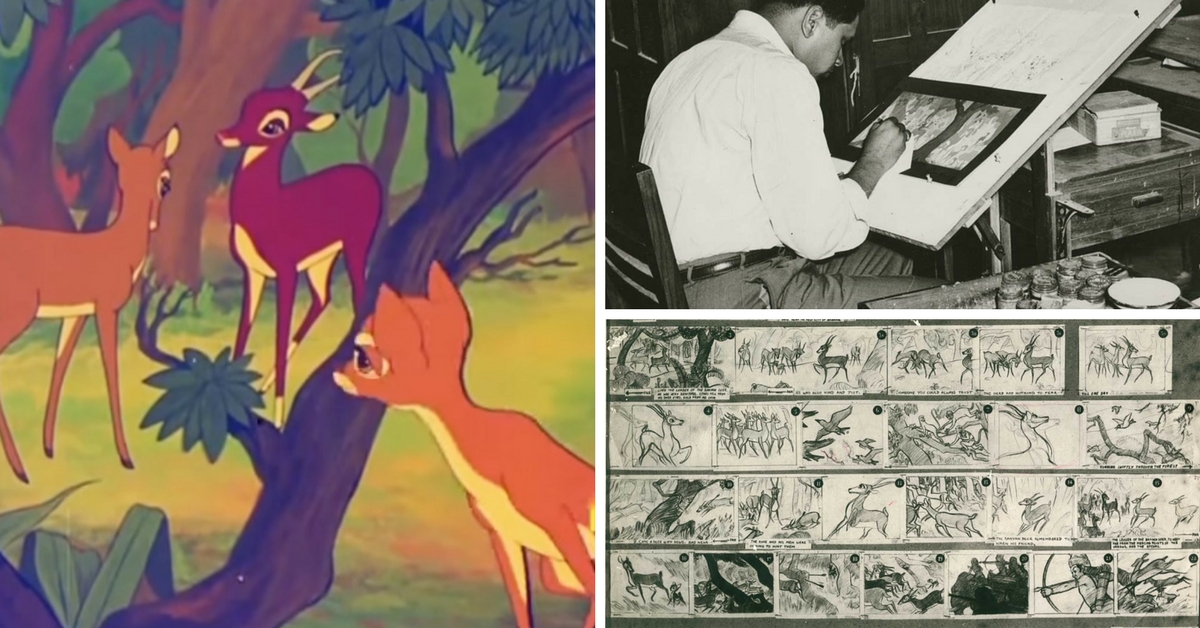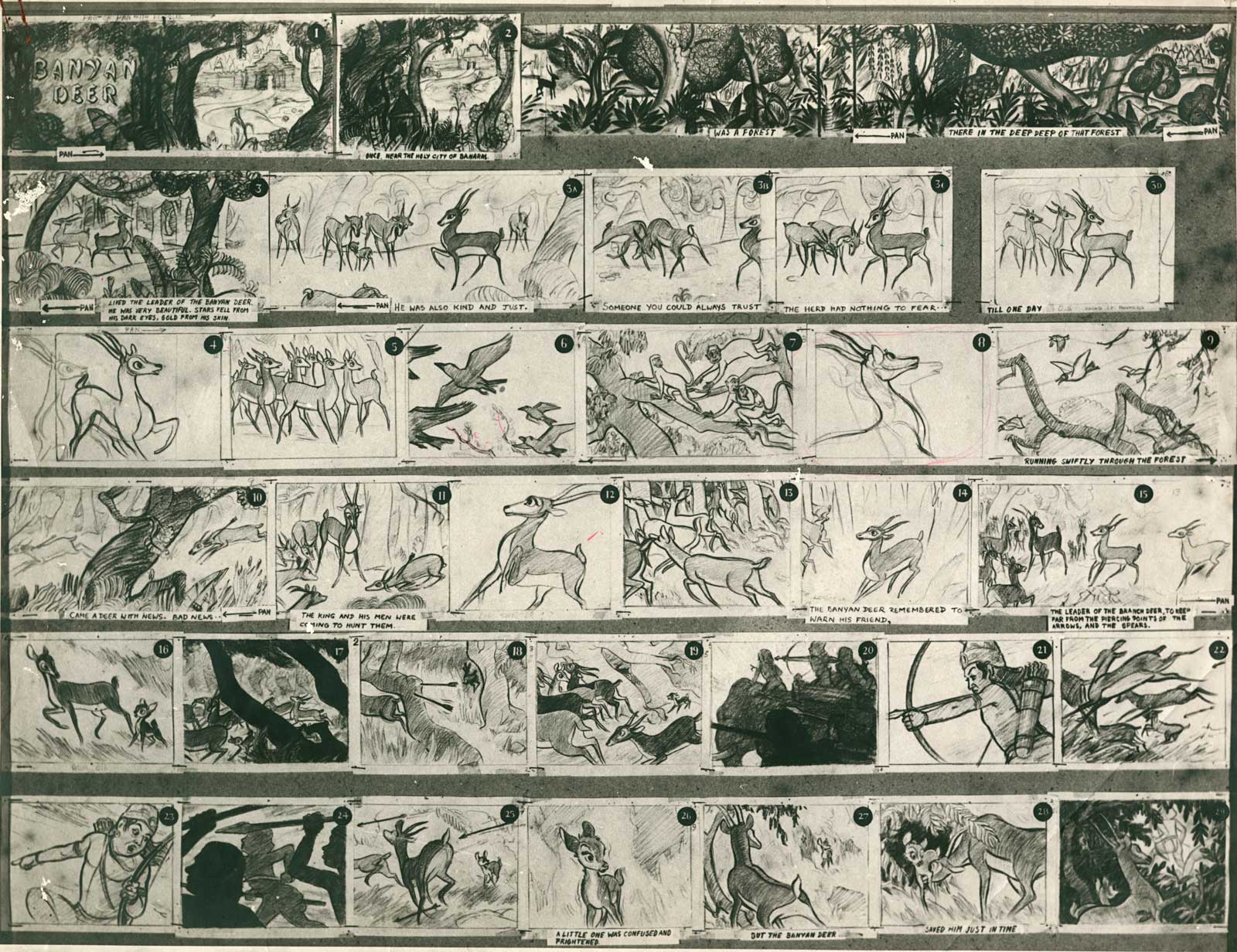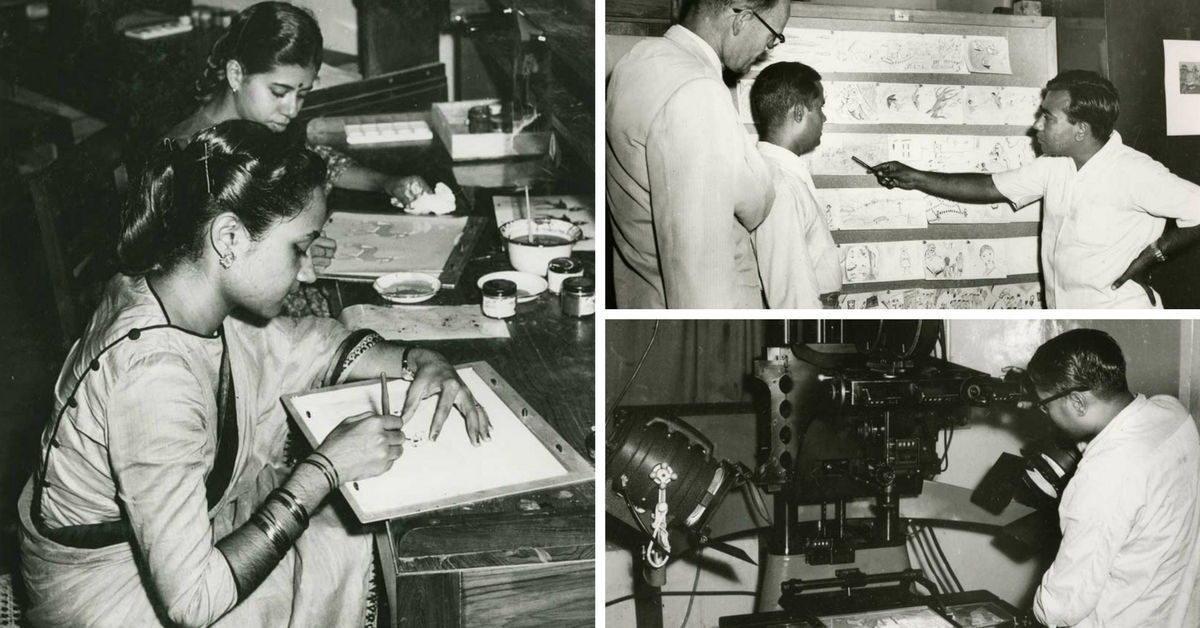When India Made Its First Major Animation Movie With a Little Help From a Disney Expert
Released in 1957, The Banyan Deer was made by the cartoon unit of Films Division of India and adapted a well-known Jataka in animated format.

Cartoons may have been traditionally meant for children, but the global success of animated movies show that their audience is diverse and not limited only to children. Today, Indian animators are highly prized in the global film industry, lending their expertise to movies like How to Train Your Dragon, Shrek and even live-action movies like Life of Pi and Maleficent. But not many know that the country’s first tryst with animated movies goes back to the early decades of the 20th century.
India witnessed the release of its first animated movie in colour titled The Banyan Deer in the year 1957.
 Image source: YouTube
Image source: YouTube
Though the movie is often hailed as the country’s very first animated movie, it’s only partly true. Hand-drawn, black and white movies had been made using elementary animation techniques in the earlier decades, such as The Pea Brothers by Gunamoy Banerjee and Jambu Kaka by Raghunath K Kelkar both released in 1934, Superman’s Myth (1939) by renowned animator and filmmaker GK Gokhale and Jumbo the Fox (1951) by Ranjit Movietone.
The Banyan Deer was the first major initiative undertaken by the Films Division of India to produce a full-fledged animated movie in colour format. FDI was established in 1948 to capture the stories of India on celluloid; less than a decade later, it began setting up its Cartoon Film Unit. Animation was considered a great medium to instruct children, and according to Year of Freedom: Vol 11, the unit was “set up to produce short films for children, instructional and educational films and films involving animation sequences.”
You might also like: Baahubali’s Mahishmati Empire Shares Its Name With This Ancient City in Central India
In setting up a quality cartoon unit, the Films Division hoped to present animated movies that would match up to international standards. The organisation sought the help of Clair Weeks, a Disney animator with deep ties to India. Clair was born in India in a missionary priest’s family, and went on to work for close to two decades on iconic Disney movies like Bambi and Peter Pan.
Clair arrived in Bombay, as Mumbai was then known, in 1956 on invitation from FDI to train those employed in the cartoon unit. He stayed on for close to 18 months, training the team that worked together to produce what is today acknowledged as India’s first serious foray in world-class, colour animation.
Produced in Eastman Color, The Banyan Deer was based on a popular tale from the Buddhist Jatakas.
 A storyboard of The Banyan Deer
A storyboard of The Banyan Deer
The Jatakas are ancient tales, narrated to present the teachings of Gautam Buddha in a simplified manner. It is believed that the Buddha himself narrated these teachings to his disciples who, in turn, narrated them to the common people they encountered on their travels.
In this particular story, the banyan deer is a golden deer and the leader of his herd who steps into the execution altar to save a mother deer from being sacrificed for a human king who loves to hunt. His compassion pleases the king, who not only lets the banyan deer go, but also spares the lives of all the deer.
The FDI chose this particular story of the movie, perhaps in keeping with the moral values inherent in the story. Besides, Buddhism was after all rooted in India and the country boasted a long-standing legacy of exquisite art and heritage, which offered a wealth of inspiration for the team.
A team of film professionals and animators—including women artists—undertook the mammoth task of conceptualising, storyboarding and animating the movie.
 Behind-the-scenes: The Banyan Deer crew at work
Behind-the-scenes: The Banyan Deer crew at work
The team included the likes of GK Gokhale, who joined FDI in 1956, and Ram Mohan, who came to be known as the father of Indian animation. Other members of the team included HR Doraiswamy (camera assistant), S.S. Varma (animation cameraman), SL Badami (deputy chief producer) and Ezra Mir (chief producer). The directors of the movie were Govind Saraiya, Shanti S Verma and Ahmed Latif.
While Clair’s intervention enabled the team in India to produce a major animated production, it also presented a different set of challenges. In his book Animation: A World History (Volume II), Giannalberto Bendazzi says that the movie turned out to be a lost opportunity for Indian animation. Some of the greatest Buddhist art can be seen in the caves of Ajanta and these were initially decided as models to base the movie on. However, the reliance on American animation came at the cost of an Indian perspective.
He writes, “Coming from Disney, however, Clair Weeks had brought material from previous Disney films. To instruct his animators on The Banyan Deer, he used the model sheets from Bambi. But the story was Buddhist, the pictorial representation from Ajanta. The cues were diametrically opposite to the Disney style, with no meeting point.”
Giannalberto illustrates his point with a quote from Ram Mohan, ‘The Banyan Deer was supposed to be the representation of the Bodhisattva and instead ended up being the avatar of Bambi.’
In spite of these differences, the release of The Banyan Deer marked a new era for animation in Indian cinema.
Many members of the film crew went on to hone their skills, make more movies, and lead training programmes for younger animators and filmmakers. Clair himself accepted teaching positions at the National Institute of Design in subsequent decades.
The Films Division produced a couple of movies each year, even as GK Gokhale and Ezra Mir worked to increase the number of productions as well as usher in a cultural of experimental animation and narratives.
You might also like: Meet the Gujarat Artisans Behind Emma Watson’s Costumes in the New Beauty and the Beast Movie
The Indian animation industry, despite the forward-thinking initiatives of many animators in the last century, has a long way to go. Giannalberto notes that animation came to a halt in India during the eighties. In recent decades, independent filmmakers are again looking towards animation. A few attempts have also been made in Bollywood, though they haven’t met with much success.
Indian animators, however, have taken great leaps forward, working for some of the biggest movies being made in Hollywood. It would be heartening to see our own film industries tap into these talented artists and add to the repertoire of made-in-India animated movies.
The archival images of the movie’s making and crew at work have been used with the kind permission of Animation Resources.
Like this story? Or have something to share? Write to us: [email protected], or connect with us on Facebook and Twitter.
NEW: Click here to get positive news on WhatsApp!

Similar Story

From Prejudice to Pride: Evolving Representations of Disability in Cinema
Cinema can go a long way in encouraging disability pride and the acceptance of diversity. v-shesh, an enterprise that prepares organisations with disability inclusion, maps the evolution of disability representation in cinema, and reflects on 10 films and shows that got it right.
Read more >
If you found our stories insightful, informative, or even just enjoyable, we invite you to consider making a voluntary payment to support the work we do at The Better India. Your contribution helps us continue producing quality content that educates, inspires, and drives positive change.
Choose one of the payment options below for your contribution-
By paying for the stories you value, you directly contribute to sustaining our efforts focused on making a difference in the world. Together, let's ensure that impactful stories continue to be told and shared, enriching lives and communities alike.
Thank you for your support. Here are some frequently asked questions you might find helpful to know why you are contributing?


This story made me
-
97
-
121
-
89
-
167












